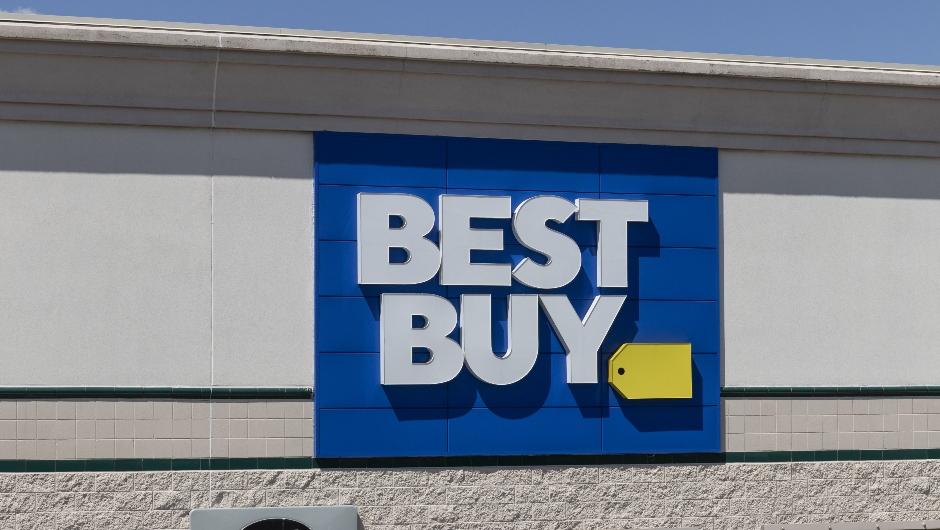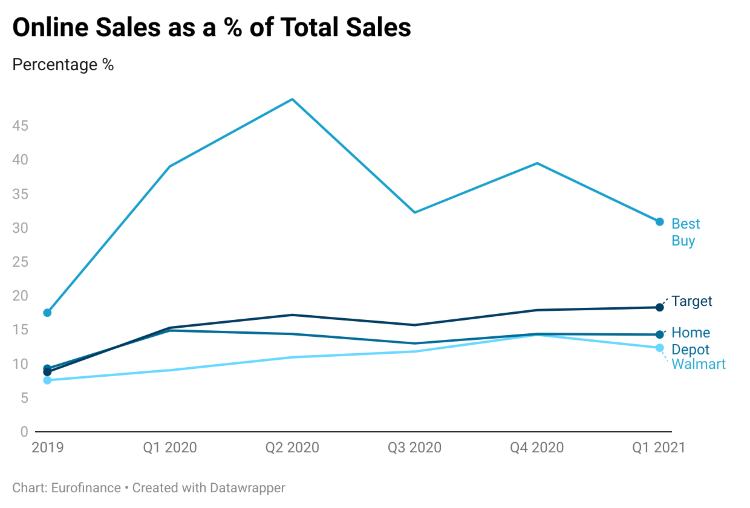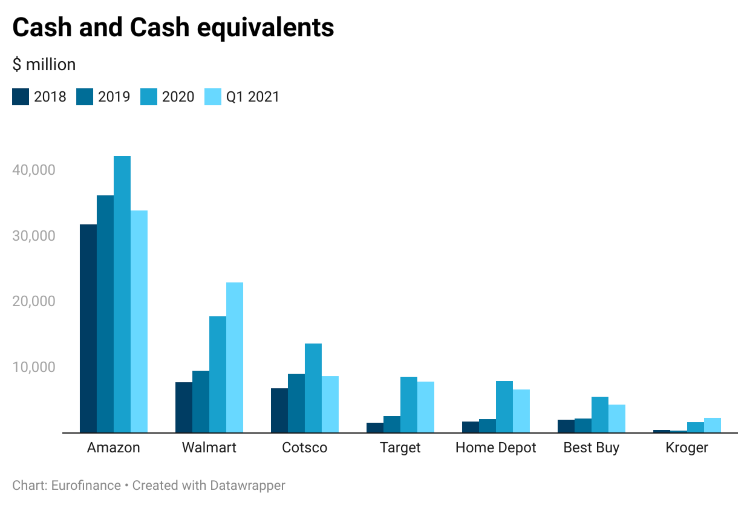Retail giants digitise inventory, build cash piles amid supply chain squeeze

Surging customer demand in the US has created supply chain bottlenecks, but US big box retailers have fought back with e-commerce and inventory algorithms.
Covid-19 led lockdowns stimulated the need for an effective digital supply chain as online sales grew rapidly for traditional retailers in 2020. These pandemic-fueled shopping trends continued into the first quarter of 2021 as big box retailers including Walmart, BestBuy, Target, Home Depot, Costco and Kroger saw their digital sales at elevated levels even though social restrictions have eased.
Digital shift in supply chain
Aided by government stimulus cheques, consumers went on a shopping spree during the final quarter of 2020. Along with the magnified demand, supply shortages and transportation backlogs pushed supply chains to the limit as retailers were left with inventory to support sales for an average of only 34 days at the end of Q1 2021. By the end of April, US retailers had enough inventory to cover just one month of sales, according to Federal Reserve data. However, this failed to put pressure on working capital as the digital efforts by retailers started to yield results as online sales continued at peak levels.

“We continue to effectively manage the outsized demand for home improvement products seen throughout most of last year despite disruptions in global supply chains that were further exasperated by port congestion during the quarter” said Craig Menear, CEO at Home Depot.
The home improvement retailer received 14.3% of its revenue from online sales in Q1 2021, as it saw sales leveraging its digital platforms increase 27% versus the first quarter last year. The $1.2 billion investments that the company has made in its supply chain since 2018 helped it in fulfilling its high demand from online channels. Thus, Home Depot was able to convert its resources into cash in 30 days after sale, fastest in the last seven years.

A similar trend was visible in the retail giant, Walmart, as the cash conversion cycle (CCC) dipped to a record low of 1.3 days in 2020, while rising to 2 days in Q1 2021.
“We’ve got a lot of really encouraging supply chain work going on that would help us use the right algorithms to be able to pull inventory from all across the network and be able to serve people.” said John Furner, President & CEO at Walmart US.
The company received 12.4% of its sales from e-commerce channels in the first quarter, 480bps higher than 2019. “In the last few, not only has the capacity gone up, but e-commerce results have been strong, delivery from stores has been strong, delivery from fulfillment centers has been strong. So these capabilities we’re putting in place will be a great foundation for this program just moving forward”, Furner continued.
Chasing Amazon
E-commerce powerhouse Amazon, whose business model was built on getting paid by customers before paying suppliers, has used the pandemic to re-establish an unassailable lead over its competitors. Two years ago, the shift to e-commerce raised the possibility of Amazon’s lead getting eroded. The pandemic crushed such hopes and the company enjoyed a CCC of -44 days during the first quarter of 2021.
Amongst the other retailers, only Target and Best Buy have significantly expanded their CCC into the negative territory, as they were paid by customers first online while paying suppliers later when it completed orders from its warehouses.
“Digital was the primary driver in Q1 2020. As such, over the last two years, both our stores and digital channels have expanded their first-quarter sales by more than $3 billion.” said, Michael Fiddelke, CFO at Target as the company’s digital penetration doubled to 18% in Q1 2021 from 7% in 2019.
Expanding Cash balance
While elevated consumer demand has caused supply chain constraints, the biggest US retailers have hoarded $86 billion of cash, 40% higher than 2019 levels, but slightly below its peak of $97 billion at the end of 2020. The leader of the pack was Amazon, as it hoarded $42 billion of cash in 2020, 17% higher than a year ago. In second place is Walmart, whose cash pile now stands at $22.8 billion.
